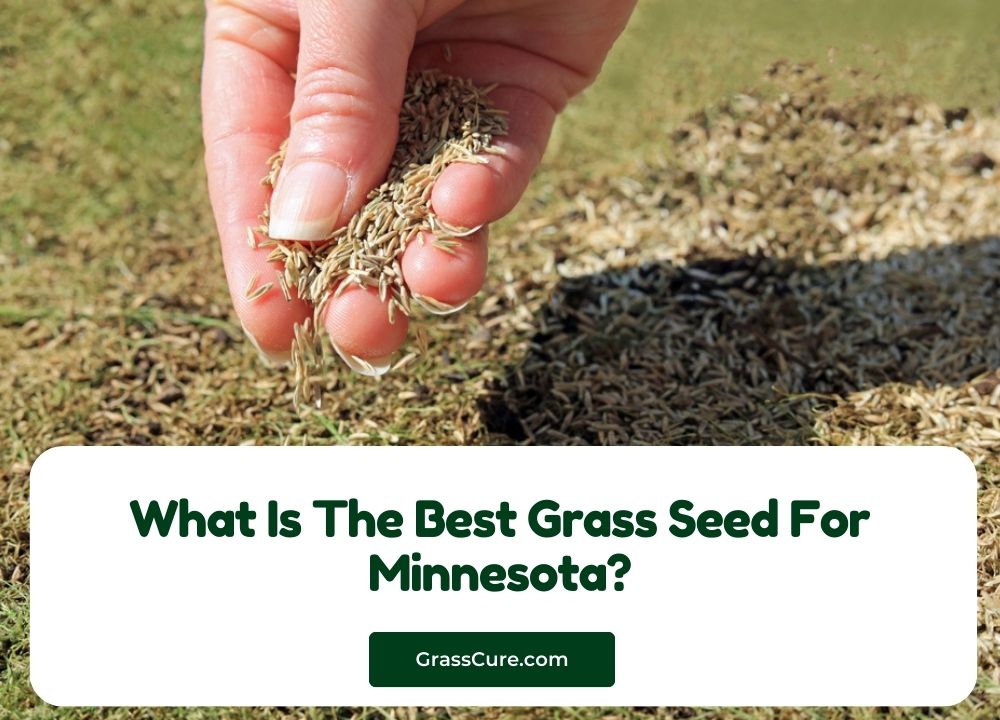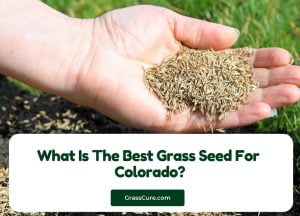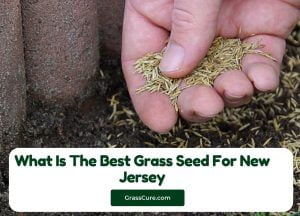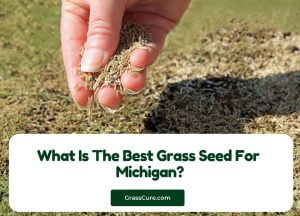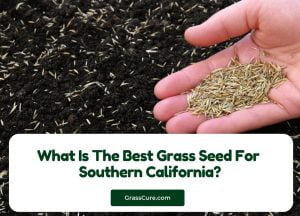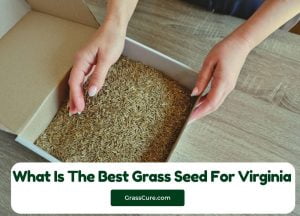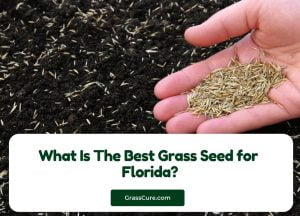Before looking at the best grass seed for Minnesota, the location matters a lot. You see, Minnesota is located in the USA’s northern part in zones 3a to 5a of the USDA map in the cold protection zone. The map shows the lowest average temperature recorded in each area. Minnesota recorded losses between -40 and -15.
The average annual rainfall is 30.61 inches and 55 inches. This information is essential when choosing the grass seeds to plant in Minnesota. This article will actually help you find the best seeds for your region.
Minnesota’s booming industry produces grass and grass seeds suitable for the northern climate. Similarly, many grass species common in other states, such as perennial ryegrass, is not resistant to cold at high temperatures in winter or have insufficient insulation from the snow.
Various seeds are available for stretchy lawns using the genetic material from the old Minnesota grass, genetic resources from other parts of the world, and materials provided by research institutes in other states.
Current work on growing perennial ryegrass focuses on improving cold resistance in winter, and scientists have recently made significant advances, especially in terms of resistance to snow mold.
In this case, the only suggestion for the best grass seeds in Minnesota is a variety that works best in the cold grass season
Cold grass is a grass that performs well in cool winters and mild summer regions. These grass show the highest growth rates at temperatures between 65 and 80 degrees Fahrenheit. This means that it offers most of its growth in spring and fall.
The most common cold grasses in Minneapolis are Kentucky, Fescue, and regular perennial grass. These seeds are usually a mixture of different needs and uses, such as in high-traffic areas and sunny or lawns with shades.
Before choosing the type of seed, you need to ask yourself a few questions. Is the lawn generally sunny or shaded? Are too many pedestrians passing? Do you actually want a yard that your neighbors envy or one that requires little maintenance to meet basic requirements? There are some positive and important things to consider when making your decision.
Look for a color-tolerant seed mixture in a shady lawn. Most of them include a slight fesk, but also Kentucky sunglasses.
A mixture of 50% Kentucky Blue and 50% Perennial Rye is optimal for sunny lawns, which the other often overuse. For easy-care lawns, Kentucky Bluegrass and a high-quality Fesk mix ensure a long-lasting lawn.
Contents
Below are the best grass seeds for Minnesota
Kentucky Bluegrass
The main grass used in Minnesota, particularly in the north, is KBG. It is the best quality lawn for colder climates and provides a subtle texture lawn.
KBG has more winter resistance properties than other cold-season grasses. The newer varieties are more resistant to disease. It works better in full sun but can be a mixture of thin Fescue for shady areas. Depending on local conditions, it can take one to three months for Bluegrass to germinate and settle. It is an excellent sports field. You can actually seed and soak Bluegrass in the facility.
Kentucky bluegrass in Minnesota is often a mixture with other cold-season grasses, such as perennial ryegrass.
The fast establishment works well with the shorter establishment time of the Bluegrass. It is also a finely textured grass that is very similar to Bluegrass and can withstand drought. Similarly, its cold-resistant properties are not as good as Bluegrass, but it works well for lawns in southern Minnesota.
Similarly, it would help if you actually planted Kentucky bluegrass at one and a half to three pounds per 1,000 square feet area.
Check For the Best Kentucky Bluegrass Seed
Thin Fescue
Thin fescue grasses are fine-leaved grasses suitable for shade conditions, diminished moisture, lower fertility, and tough pH levels in some soils.
Fescue planted in sandy soils with good drainage grows better, so it can be sufficient to add a layer of sand to the soil surface while preparing the ground. Extra fertilization, frequent watering, or occupation in poorly drained soils can damage the plant’s quality and body.
With optimal management, thin Fescue can be an attractive grass for your lawn. However, Fescue is rarely sown alone. Delicate garlands are often found in mixtures with other cold-season grasses on easy-care or shady lawns. Similarly, you should actually plant at five pounds per 1,000 square feet and keep your cutting height between 3 and 4 inches.
Bentgrass
If handled correctly, this grass can produce a high-quality lawn with an excellent, dense, and uniform texture. However, acceptable cultural practices are costly and time-consuming, so few owners can grow a lawn.
In general, folded grass is mainly seen on golf courses and is not suitable for most domestic lawns. It does not mix with Kentucky bluegrass and should not be part of a lawn seed mix.
Grasses that you should avoid in Minnesota
Zoysia: This warm-season grass does well in the southern US, but not Minnesota. It slowly sinks and is only green between the last spring frost and the first autumn frost.
Annual ryegrass: This is a very inexpensive grass that is only used as a replacement for lawns during hibernation in the warm season to add color and does not come back the following year. Very different from perennial ryegrass.
Thin Fescue: Older varieties and cultivars did not perform well in Minneapolis due to their rough texture and limited hardiness. However, newer types are being developed and may be recommended shortly.
FAQs
Q1: What is the best grass seed for Minnesota’s climate?
A1: The best grass seed for Minnesota’s climate is a blend of cool-season grasses. Kentucky Bluegrass, Fine Fescue, and Perennial Ryegrass are popular choices. These grasses can thrive in Minnesota’s cold winters and warm summers.
Q2: Is Kentucky Bluegrass a good choice for Minnesota lawns?
A2: Yes, Kentucky Bluegrass is an excellent choice for Minnesota lawns. It is well-suited to the state’s climate and is known for its lush, green appearance. It can handle the temperature fluctuations that Minnesota experiences.
Q3: What grass seed should I use for shaded areas in Minnesota?
A3: For shaded areas in Minnesota, consider Fine Fescue grasses like Creeping Red Fescue and Chewings Fescue. These grasses are shade-tolerant and can thrive in the lower light conditions under trees and buildings.
Q4: Can I use a warm-season grass in Minnesota?
A4: Warm-season grasses like Bermuda or Zoysia are not ideal for Minnesota due to the state’s harsh winters. These grasses go dormant in cold temperatures, leading to a brown, dormant lawn. Stick with cool-season grasses for a Minnesota lawn.
Q5: How do I prepare my lawn for seeding in Minnesota?
A5: To prepare your lawn for seeding in Minnesota, start by removing weeds and debris. Aerate the soil to improve seed-to-soil contact. Choose a high-quality grass seed blend, spread it evenly, and water the area thoroughly. Follow a regular watering and maintenance schedule for successful grass establishment.
Q6: When is the best time to plant grass seed in Minnesota?
A6: The best times to plant grass seed in Minnesota are early fall (late August to early October) and spring (late April to early June). These times provide the right soil temperature and moisture levels for optimal seed germination and growth.
Q7: What should I look for when buying grass seed for my Minnesota lawn?
A7: When buying grass seed for your Minnesota lawn, look for a high-quality seed blend with cool-season grasses appropriate for the region. Check the label for details on grass types and their percentages to ensure they match your lawn’s needs.
Q8: How often should I water newly seeded grass in Minnesota?
A8: Newly seeded grass in Minnesota should be watered regularly to maintain consistent soil moisture. Water lightly multiple times a day, aiming for approximately 1 inch of water per week. Avoid overwatering, as it can lead to issues like disease and poor grass growth.
Q9: Can I mix different grass seed types for my Minnesota lawn?
A9: Yes, you can mix different grass seed types for your Minnesota lawn to create a custom blend that suits your specific requirements. Just ensure that the grass types you choose are compatible in terms of growth habits, shade tolerance, and climate adaptation.
Q10: Are there any low-maintenance grass seed options for Minnesota lawns?
A10: Yes, some low-maintenance grass seed options for Minnesota lawns include Fine Fescue blends. They require less mowing and fertilization compared to Kentucky Bluegrass or Perennial Ryegrass, making them suitable for those seeking a low-maintenance lawn.
Conclusion
In Minnesota, you can plant grass seeds from spring to fall. However, keep in mind that spring seeds can prolong the grass’s growth and promote its growth. However, summer heat and weeds can cause problems. Planting in the fall minimizes the risk of heat damage but allows you to work in temps between around 50 ° F and 70 ° F for about six weeks.

